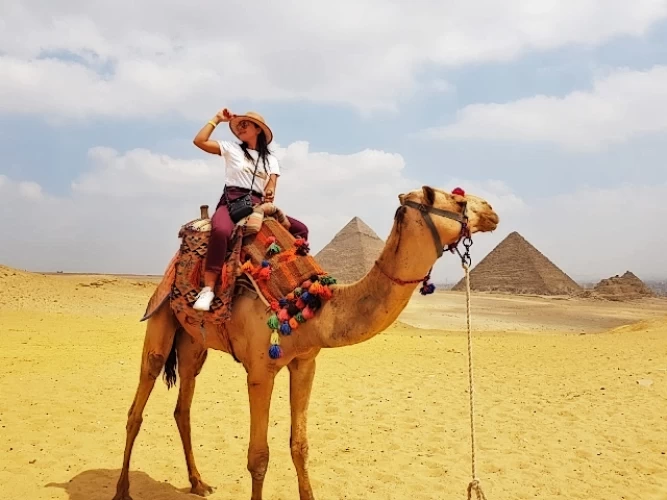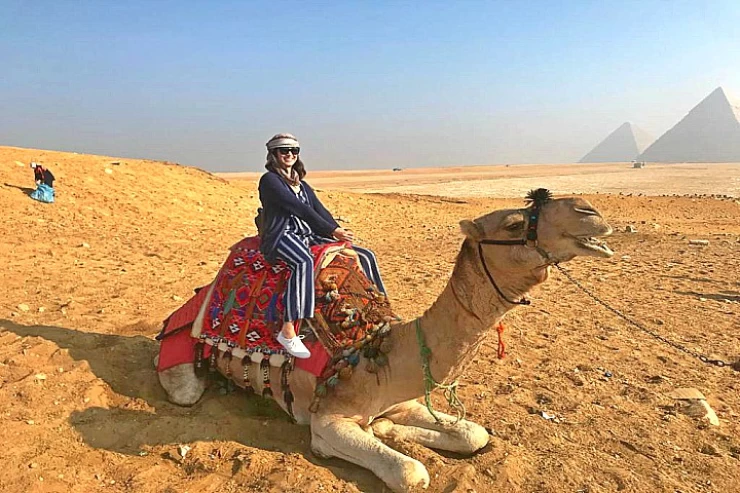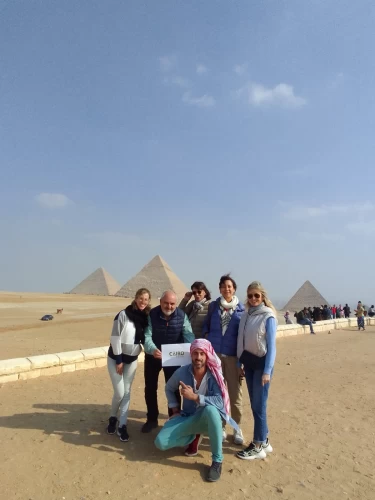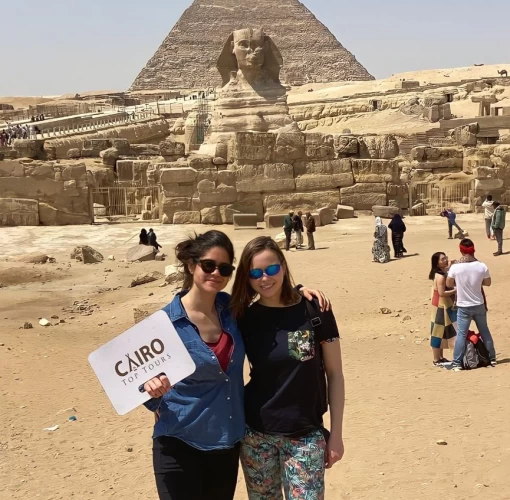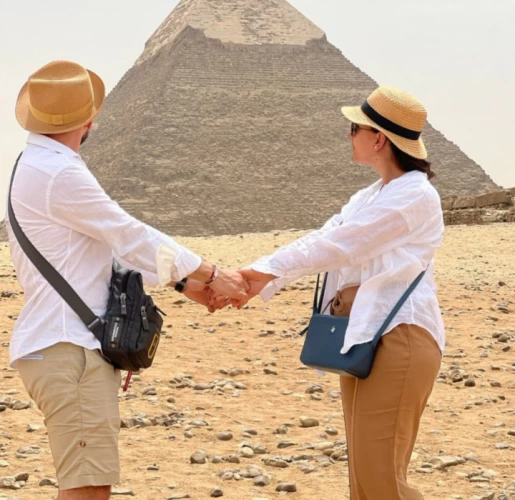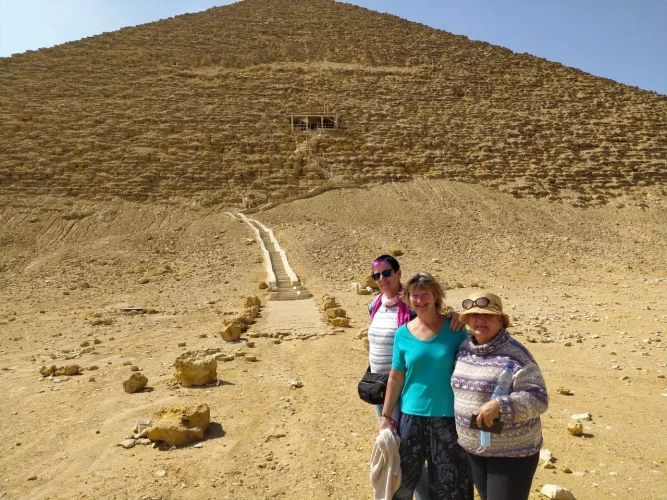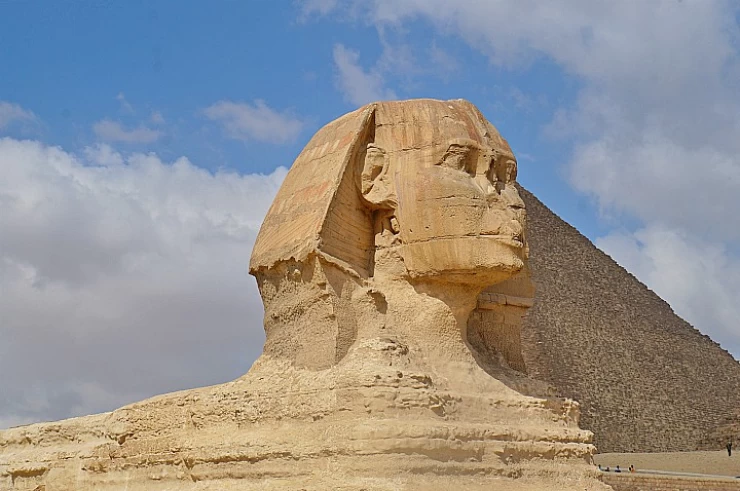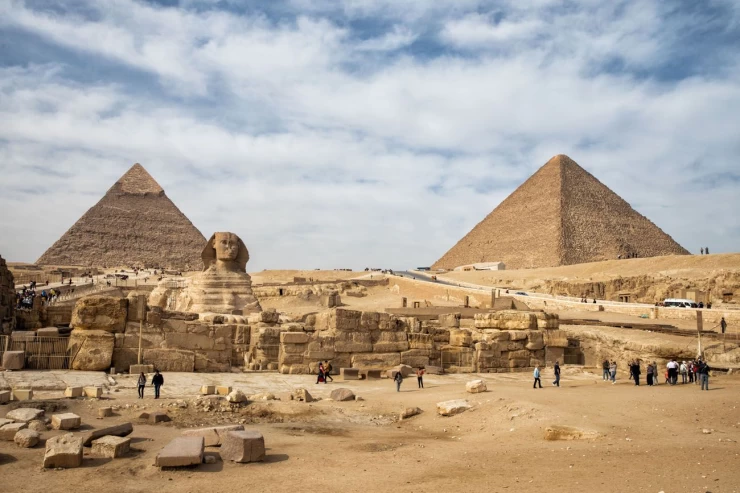You will be transferred to Cairo. Your guide will meet you when you arrive and start your tour of the Great Pyramid of Giza. Local limestone was used to build the Great Pyramid, but in the past, it was entirely encased with premium limestone. The casing stones were brought from the Tura quarries by boats that reached the pyramid. Discover more about Khufu, Khafre, and Menkaure with an experienced guide who speaks fluent English.
You will also see the statue of the Sphinx, representing King Khafre, son of King Khufu, in the form of a composition composed of a human head representing human intelligence and a lion's body representing animal strength. Here, the statue combined human intelligence and animal strength as well as the ancient Egyptian religion. It was not just a sculpture made by the wind because the statue represents the pinnacle of religious thought and sacred kingship in the era of the Fourth Dynasty and the era of the Old Kingdom.
After that, you will be transferred locally to try an Egyptian dish, as the history of Egyptian cuisine dates back to the Pharaonic era, as there are many Pharaonic foods that still exist today. After that, you will be transferred to the Saqqara area.
The tomb of Ptah Hattab is characterized by the presence of a number of inscriptions that show the extent of the ingenuity of the ancient Egyptian artist, as some of its colors are still vivid today, in addition to its unique architecture, which is embodied in the ceiling of the main compartment of the tomb and was designed in the form of palm trunks, and the inscriptions inside the tomb of “Ptah Hattab” vary between flocks of “Wajid” birds and some inscriptions that tell the story of the life of the owner of the tomb
After visiting the many archaeological sites in Saqqara, you will be transferred to your hotel.



